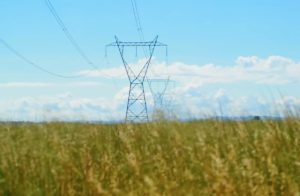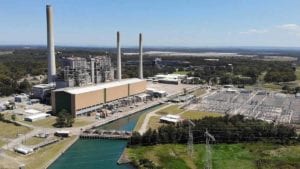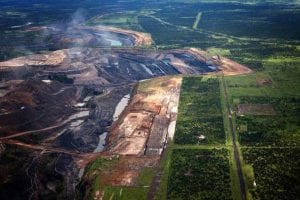In what’s been hailed as an Australian first, electricity transmission network operator AusNet has carried out the transfer of an energised 500kV powerline in the Moyne Shire region of southwestern Victoria.
The work was carried out by a team of 26 AusNet technicians, alongside four experienced live line workers from the US, who performed the live electricity transfer from an existing transmission line into the network operator’s Mortlake Terminal Station.
“AusNet is pleased to have safely completed the live line transfer and is looking at expanding this type of work across the transmission network”, said AusNet Executive General Manager, Liz Ryan.
The transfer forms part of a wider batch of network upgrades to AusNet’s grid to support Victoria’s transition to renewable energy, as laid out within the State’ Government’s Renewable Development Plan.
Reduction in planned outages
Although a first for Australia, the practice of transferring live high voltage power lines has been pioneered in the US over several decades.
Whilst working on power lines, technicians deploy a wide-variety of specialist equipment and techniques to avoid the potentially fatal consequences associated with such high voltages.
One key piece of equipment involved in live powerline work is the “hot stick” – a fibreglass pole that creates a safe distance between the wire and worker whilst also providing insulation from electric shock. As fibreglass is non-conductive and resistant to corrosion, work on high voltage lines using the stick can also be carried out in the rain.
Technicians can also deploy a technique known as “bare-handing” which allows workers to physically touch super high voltage lines without being electrocuted.
Similarly to birds safely landing on live power lines, workers in protective faraday suits are suspended in the air upon specialised platforms, causing high currents to flow around technicians, instead of through them.
One of the US’ largest utility’s, Southern California Edison (SCE), recently uploaded a video showcasing technicians “bare-handing” their El Dorado-Lugo 500kV transmission line.
According to SCE’s Director of Transmission, Raj Roy, barehanding has “demonstrated to be a safer work method than working on a de-energized transmission line.”
Safety and cost benefits
Along with the counterintuitive safety benefits, carrying out work on live power lines can also be less expensive for both the utility and electricity market, when compared to de-energising the power line.
Ryan at AusNet explained that although planned de-enegrisisation outages “don’t typically affect households directly … they can increase market costs and delay critical upgrades”, meaning innovative methods, such as live wire transfers, provide benefits to everyone.
Along with the recent transfer, AusNet is currently installing additional bays at its Mortlake station, enabling new renewable generation facilities slated for the area to connect to the grid.
The upgrades are scheduled for completion in August 2025.
Although AusNet was previously publicly listed on the Australian Stock Exchange, as of February 2022, it has been controlled through a subsidiary owned by Canada’s Brookfield Asset Management.
Last year, it was reported that AusNet had overhauled its business structure and executive leadership team in an effort to connect more renewables and build community trust.








